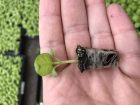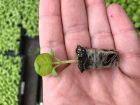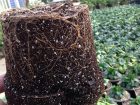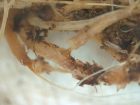
Features
Crop Protection
Inputs
The three D’s: Diseases, disease triangle and diagnosis
When it comes to disease, it’s important to remember which parameters we can control and how.
April 30, 2018 By Dr. Rosa E. Raudales
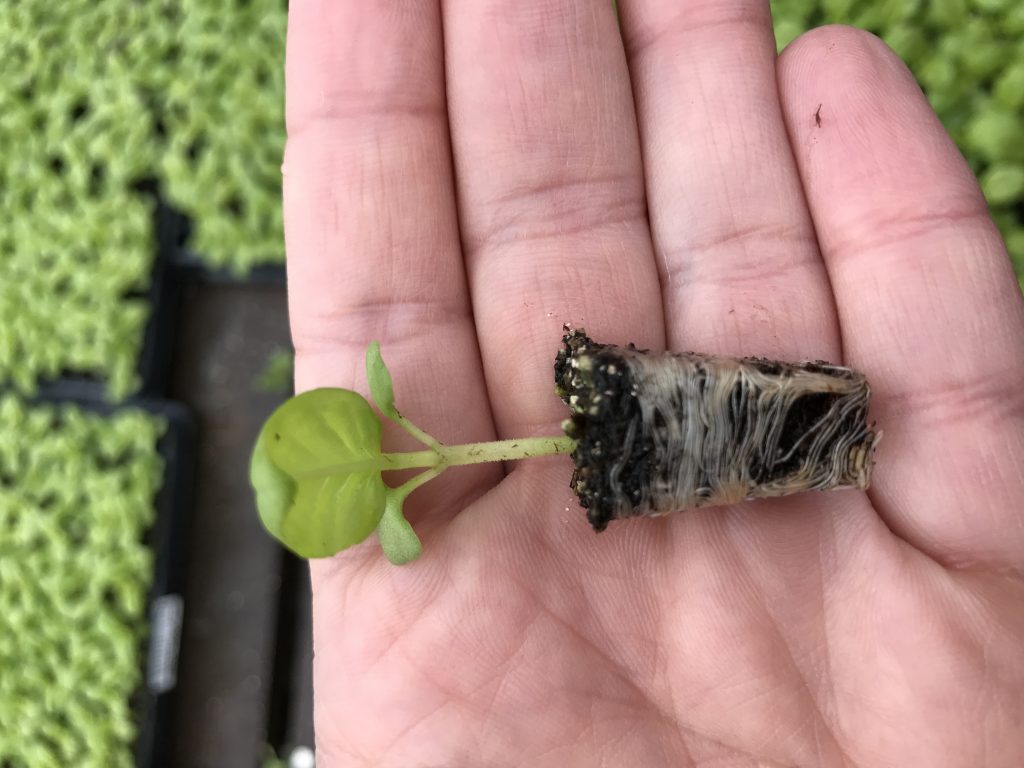 Figure 1. Look for root rot in plugs R.E. Raudales
Figure 1. Look for root rot in plugs R.E. RaudalesThe disease triangle is a concept used by plant pathologists to explain factors necessary for disease to occur. Disease will only occur when a virulent pathogen is present, the plant is susceptible to the pathogen and the environment is conducive for disease. If one of the three components is absent, then disease will not occur. That is why when we think about preventing plant diseases, we should keep the disease triangle in mind. Ask ourselves, which parameters can we control?
We will break this up by factor – host, pathogen and environment. Luckily, we work in greenhouses where we have a lot of control over the environment.
1. Use resistant varieties (host) – This one is simple, but we have little control over it. Seed companies make a big effort to develop cultivars with tolerance or resistance to pathogen infection, while offering desirable traits for consumers. Unfortunately, the process takes quite a bit of time and sometimes pathogens overcome resistance. Check the seed catalogs, talk with your supplier and choose the best option. Planting susceptible cultivars has a high risk of disease and plant loss.
2. Prevent inoculum entry and spread (pathogen) − Root pathogens can enter and spread in greenhouses via infected plant material, contaminated growing media or irrigation water. Water moulds, including Pythium and Phytophthora species, are the most abundant and frequently reported groups of pathogens found in water. These pathogens form zoospores that can swim freely in the water and actively search for roots, by a process called chemotaxis. Rhizoctonia, Fusarium, Alternaria, Sclerotinia and Botrytis are among the most common fungi (not to be confused with water moulds) that cause root diseases. These fungi and the water moulds are carried by organic matter in the water, substrate or plant tissue.
Growers should always inspect incoming plants. Plugs and seedlings are especially sensitive to root rot (Fig. 1). Growers can dip incoming trays of plugs with biofungicides as a standard and preventative practice. When growing your own seedlings you can also apply biofungicides as a drench or use media that contains biofungicides. In general, biofungicides are effective in preventing root rot at early stages. Preventive applications of fungicides also help reduce plant pathogen inoculum. We recommend that you contact your local agent for recommendations on actual products and proper rotations.
Growers can reuse growing media or containers only if they can properly sanitize them. While this practice is feasible and a sustainable way to reduce waste, this practice has a high risk for the spread of disease. Growers should only reuse media and containers if they can pasteurize the media and steam the containers. Sanitation of containers should first include physical removal of organic debris, then chemical sanitation (e.g. activated peroxygen) and finally steam treatment.
Irrigation water can be a source or dispersal mechanism for plant pathogens. Surface-irrigation water sources, like ponds, have the highest diversity and abundance of plant pathogens. Well, municipal and rain water typically are not sources of plant pathogens. All water sources serve as a dispersal mechanism; this is especially true when the water has a high load of organic matter. We highly recommend that growers pay attention to where the water moves around in the operation. Ask yourself the following: Where is the water coming from? Are there areas where the water splashes to younger or more susceptible crops? Is the water runoff properly channeled without coming into contact with plants or being combined with fresh clean water? If any of these represent a potential risk of pathogen entry, then take action.
Water treatment options to remove pathogens from the water include filtration and sanitation. Filtration systems are extremely important for any irrigation system. When it comes to disease prevention, filters play an important role in removing organic matter that may harbour plant pathogens, as well as reducing sanitizing demand. Sanitizing demand refers to the amount of sanitizer that reacts with organic or inorganic materials after a given contact time. For example, if we inject five parts per million (ppm) of chlorine in the water, and we only measure one ppm of chlorine after 10 minutes (residual chlorine), the difference between how much we applied and how much is left is the sanitizing demand. In simpler terms, dirtier water needs more sanitizer for it to be effective. Currently, the safest option is to filter, then sanitize.
Selecting between water-treatment alternatives is a complex decision. The right choice will depend on water quality parameters, target organism(s), adaptability to current irrigation system and financial access. Waterborne Solutions (backpocketgrower.com) is a tool that summarizes published data on the efficacy of water treatments. The summaries are organized by organism or treatment system.
Other practices like avoid putting trays directly on the floor, letting the hose touch the floor, and removing debris and weeds are small but important practices that help prevent pathogen dispersal. A clean greenhouse equates to healthy plants.
3. Control the environment. When we think about root diseases, moisture in the growing media is the most important environmental parameter you can control. Media saturated with water for prolonged periods result in high disease incidence. Being a “dry grower” is also beneficial in preventing plant stretch. High fertilizer rates can damage the integrity of the roots and open entry points for infection, resulting in a high risk for root diseases.
If everything that we do fails and disease occurs, the next best option is to detect the problem early. Here are a few general tips on general disease diagnosis:
Know what it normal. The grower’s experienced eye is a valuable tool for detection of diseases. Root diseases are very easy to spot if you pull out plugs (Fig. 1) or flip containers (Fig. 2). You know healthy roots should be white and have fine roots.
Look for patterns. An uneven pattern of symptoms in the growing area or in the plant suggests that the causal agent of the problem is biotic – either a pathogen or an insect. Uniform patterns suggest that the problem is caused by an abiotic factor (i.e. plant growth regulators, fertilizer, greenhouse environment). The exception to this rule is when a disease is spread by vegetative propagation (e.g. virus or bacteria). In that case, the pattern is usually uniform.
Look for signs and symptoms. Root necrosis and rotting, plant wilting and stunting, and nutrient deficiency are symptoms associated with root diseases. Pythium root rot causes a rat-tail-like appearance in the roots, as the outer tissue of the root is pulled easily and the cortex remains intact (Fig. 3). Signs can usually only be observed with high magnification.
Evaluate environmental conditions. Take note when environmental conditions in the greenhouse are extreme (e.g. too cold, too hot, rained too much, dark days, etc.). Be aware of potential disease development, act proactively by adjusting greenhouse environmental controls or spray preventative applications of fungicides.
Confirm the diagnosis with a professional laboratory. In-house detection is a good practice for catching problems early. However, we highly suggest that you send a sample to your local plant diagnostics laboratory to confirm the diagnosis. For example, root rots can be difficult to diagnose, as they can be caused by a number of fungi or water moulds. Different products are required for different groups of pathogens.
Dr. Rosa E. Raudales is an assistant professor and greenhouse extension specialist at the University of Connecticut, with a M.S. in plant pathology and a PhD in horticulture. rosa.raudales@uconn.edu
Print this page
